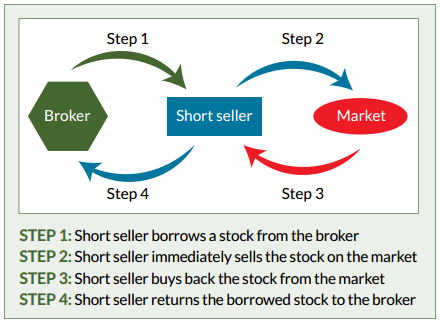The National Treasury has finally allowed the Nairobi Stock Exchange (NSE) to introduce short-selling, a long awaited move that is expected to boost liquidity and diversify the exchange’s services to in a bid to attract more investors.
Treasury has through a gazette notice authorised stock lending and short selling, but restricted their adoption by limiting them to licensed market participants.
Short selling, which allows investors to make gains in a falling market by borrowing a stock they don’t own, selling it and agreeing to buy it back at a lower price, plays a critical role in developed capital markets since it makes price discovery more efficient and smoothens volatility while providing investors with a host of risk-management tools.
The Capital Markets Authority (CMA) has in the past said it was consulting on the operating model and technical enhancements of the short-selling system.
How short-selling works:

Short selling is controversial because when a large number of investors decide to short a particular stock, their collective actions can have a dramatic impact on the company’s share price. Many companies will blame short sellers for sharp declines in their stock.
READ: Politics, debt distress threaten GDP growth, AfDB report warns
However, in part due to a concern about causing instability, the CMA has put some measures in order to minimize the risk associated with short selling.
The practice will only apply to a limited number of listed securities, which will be reviewed and determined by the authority. The CMA hasn’t named the initial eligible stocks.
Excerpts from the THE CAPITAL MARKETS (SECURITIES LENDING, BORROWING AND SHORT-SELLING) REGULATIONS, 2017
- A market intermediary who carries out short selling shall once in every month or in any frequency that may be determined by CMA, submit to the Authority a report of securities lending and borrowing transactions it has carried out in the period under review.
- The Authority may require each regulated person to report the net securities lending and borrowing position of each security held by the regulated person on a regular basis.
- A borrower in a securities lending and borrowing transaction shall provide the lender with collateral of at least one hundred per centum of the value of the borrowed securities. The collateral maybe in cash or Govt paper.
Source: Kenyanwallstreet.com









![A TotalEnergies outlet in Syokimau, Machakos County. The company operates 176 service stations in Kenya. [Photo/ TotalEnergies]](https://businesstoday.co.ke/wp-content/uploads/2021/09/total.jpg)



Leave a comment